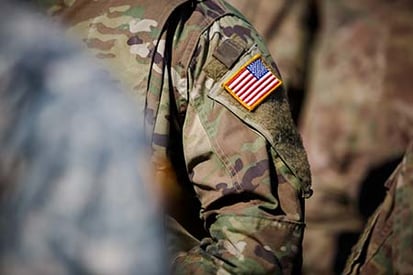 The type of performance fabrics used for military applications can have a profound effect on day-to-day operations. Advancements in the quality and durability of textiles make for longer-lasting and more-reliable products. It is helpful to understand what are the most important of these innovations when making purchasing decisions.
The type of performance fabrics used for military applications can have a profound effect on day-to-day operations. Advancements in the quality and durability of textiles make for longer-lasting and more-reliable products. It is helpful to understand what are the most important of these innovations when making purchasing decisions.
According to the National Council of Textile Organization, the United States Armed Services use over 8000 textile items on an annual basis. With the limited time and resources of procurement officers and base commanders, this guide will highlight the most important advances in military fabrics.
Waterproofing
When it comes to the textile needs of the military, it is not good enough for fabric to be water-resistant. If a storage structure suffers leaking at the seams and begins to drip, sensitive military equipment will be subject to irreparable water damage. When selecting a fabric for the myriad uses across the base, be sure it is completely waterproof.
Natural fibers and woven synthetic fabrics can keep equipment and personnel dry for a finite period of time, but unusually heavy or long-lasting precipitation could prove devastating. However, polyester based composite synthetic fiber provides what can truly be considered to be waterproof. The seams of the fabric are dielectrically sealed, which allow them to keep water out for an indefinite period of time.
Fire Resistance
The military has to be ready for anything and that includes potential damage from flames. No fabric is completely fireproof and eventually any material will burn. However, certain materials are more flame-retardant than others, whether inherently so or due to chemical treatment. One sign that a fabric can stand up to the damage of fire is to verify it has met the National Fire Protection Association Standards.
Mildew and UV Resistance and Protection from Cold and Heat
Mildew and UV rays have each proven to be threatening to fabric used for military applications. Both have an effect on the appearance and the performance of the specialty fabric.
Being able to resist mold and mildew goes hand-in-hand with a material’s ability to keep out water.
Woven materials may absorb small amounts of moisture, which often result in the growth of mildew and molds. This fungal growth can prove costly in terms of the longevity of the material and can leave it more susceptible to future damage. Additionally, mildew will leave an unpleasant odor that makes for a terrible experience when working in close quarters with the fabric.
Meanwhile, UV rays from the sun pose an equally menacing threat to your military fabrics. Many recent military operations have been focused in the Middle East, Central Asia and Northern Africa, and military bases dot the United States’ Sunbelt. While one effect of sun-damage is a degraded appearance, it goes beyond simple aesthetics. High levels of exposure on untreated or non-UV-resistant fabrics can leave them brittle, cracked or stiffened.
Military personnel are subject to extreme temperatures fluctuations. From the blistering heat of the daytime sun to freezing cold conditions at night, soldiers must power through. The best performance fabrics offer the maximum protection from the elements and keep your people shielded.
Abrasion and Tear Resistance
The rigors of military life can take its toll on lesser fabrics. Materials which are designed to withstand a high level of abuse are better suited for a long lifespan in military service. Few fabric applications will endure more abuse than those used by military personnel and there are two crucial factors to consider in your purchase.
Look for performance textiles which are produced with woven polyester scrims. This will give the material a higher level of tear-resistance. Abrasion resistance is achieved when a fabric is manufactured with a consistent square yard average weight.
No matter what the task at hand, it is crucial for military teams to be able to have full faith in the equipment. Textile companies like Herculite, who have served the United States military for decades, have demonstrated a track record of reliability. When your soldiers have confidence in their equipment, they can keep complete focus on the important task at hand.
Military fabrics are, undoubtedly, specialty fabrics. Their uses and applications demand durability, quality and structural integrity. Download our free Whitepaper to learn more about the four essential characteristics that should be found in all military fabrics.
